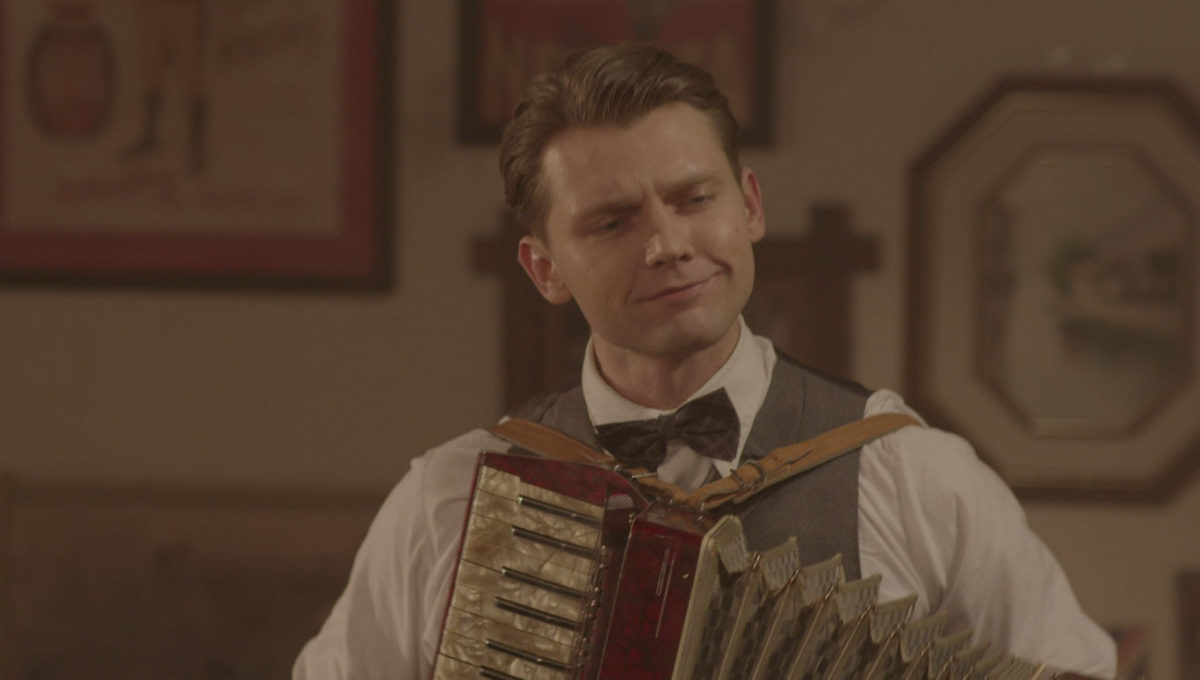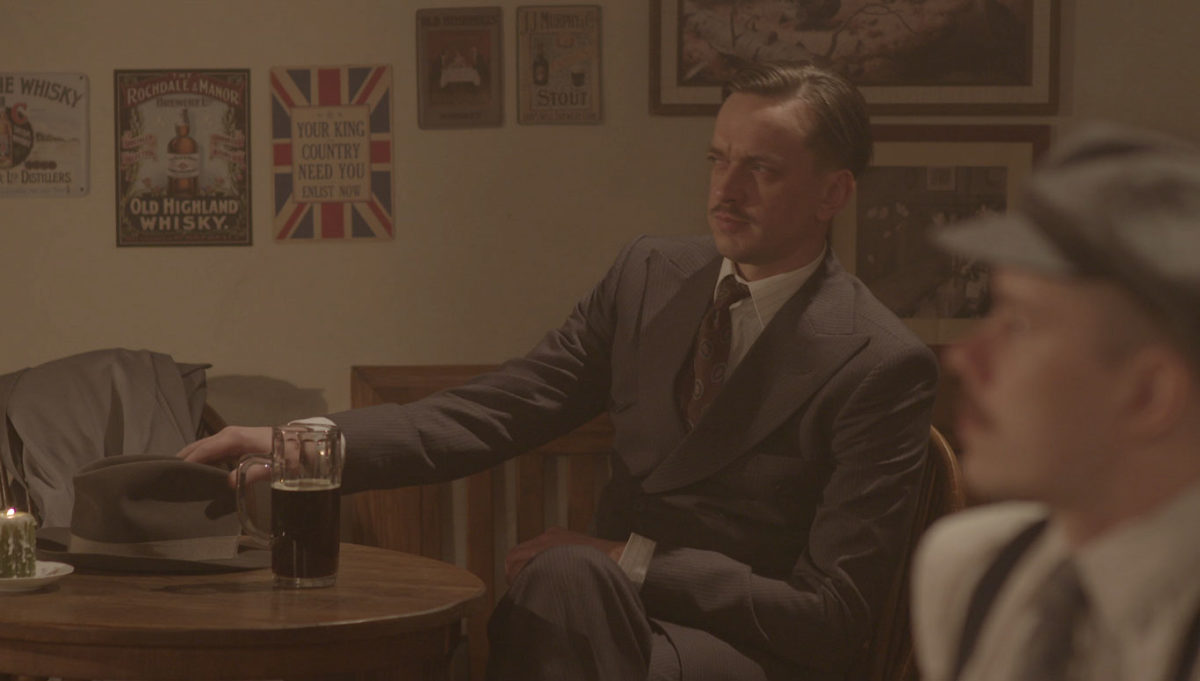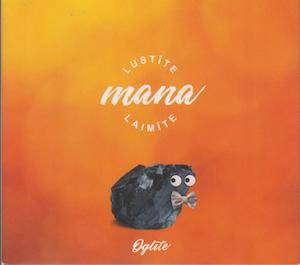I have always preferred minor character actors to A-list film stars. They might only get a scene or two, but the presence of these strangely-shaped, broken-nosed, odd-looking and heavily-accented figures gives a film a human appeal and variety that can never be conveyed by the handsome and beautiful leading men and ladies.
When I was young I even had a book called The Heavies, which chronicled the careers of a certain sort of supporting player. To this day I can rattle off the biographies and filmographies of Elisha Cook Jr,. Marc Lawrence and William Bendix, oddballs who can be seen lurking in the backgrounds of innumerable films noirs. No-one else is the least bit interested in them.
So when I was offered the chance to join the ranks of odd-looking people with a minor role in Sarkanais Mežs (Red Forest), the flagship TV production of Latvia’s centenary funding project, I accepted quickly despite a notable lack of acting experience. If reading The Heavies had taught me one thing, it was that drama school and The Method were by no means pre-requisites for a successful acting career. All it really takes is an interesting face that can be suitably contorted in the inevitable death scene.
Joining the cast came by a roundabout route. I occasionally act as a script consultant. Sarkanais Mežs is an adventure series loosely based on real events and set in 1949. Part of it involves Latvians being trained in England to infiltrate the Soviet occupation of their homeland and consequently, numerous scenes are set in a postwar England conjured from locations found entirely in Latvia.
There are a few sections of English-language dialogue and the producers sent these to me for a quick look, as a result of which a few minor changes were made. They mainly concerned the machinations of a slimy English doctor, a sweet Latvian nurse and our fine, upstanding hero. In a couple of scenes, a barman by the name of ‘Jim’ loiters in the background and occasionally brings drinks. The part could have been written for me as I do a lot of both in my spare time.
This was a marvellous opportunity to boost my thespian bona fides. The barman who does nothing but polish beer glasses and nod to customers is one of the great stock characters of twentieth century cinema. Only on rare occasions – notably The Shining – does the barman do more than polish and nod but oh! the importance of this job in establishing the mood or mise en scene, if you prefer the Godardian to the Kubrickian.
Night in the Museum
I arrived on the location for a night shoot convinced a new career would soon open up for me. The transformation of the Mentzendorff House museum into an English pub of the late 1940s was extremely well done. Reproduction advertisements for Guinness and Bass Ale adorned the walls, bottles with specially printed labels were lined up behind a neat little counter and tweed-capped “regulars” filled the tables, puffing on empty pipes and playing brag with practiced ease.
After being issued with a white shirt, black waistcoat, a pair of rather tight shoes and a natty little apron to signal my occupation unambiguously to the viewing public, I wandered around the set admiring the work. I was even able to provide a little additional value by pointing out that prices on the menu (Jim seemed able to cook a variety of lamb dishes combined with increasingly unlikely vegetables but little else) and beer pumps should be written with a “d” to represent pence and not “p” in pre-decimal Britain.
When I told this to an assistant director, he looked skeptical.
“But why ‘d’ if it stands for pennies?” he asked, not unreasonably.
I had to admit I had no idea, though subsequent research showed that it was derived from the Roman dinarius. Maybe later this year Britain will regress to using “d” for pence again as its post-imperial Brexit fantasy plays out and it reintroduces the florin, the sixpence and the shilling?
Another of my pieces of advice went unheeded, for the simple reason that the change I suggested would have completely ruined one of Sarkanais Mežs‘ main plotlines. In the scene in question, some Latvians are singing along to the popular song Rozamunde when an English hooligan takes exception to these foreigners and their music, becomes aggressive and winds up having to be ejected from the premises by yours truly, Jim the barman.
The accordionists pumped, and the Latvians sang to get their voices warmed up for the scene.
“Um… there’s a problem,” I said to the assistant director.
“What now?” he replied.
“The song,” I said.
“Yes, Rozamunde. It was a very popular wartime Latvian song!”
“It was also a very popular wartime British song. It’s called “Roll Out The Barrel“. It’s exactly what you would expect to hear in a British pub of the 1940s. No-one would ever get angry about hearing Roll Out The Barrel.”
“Oh,” said the assistant director, “Let’s not say anything. Maybe the hooligan doesn’t like the Latvian words.”

With everyone warmed up, including myself courtesy of a small fire kindled behind me to add extra atmosphere, it was time for the moment of truth. My pre-poured beer was safely hidden out of site below my fake beer pumps. The extras were positioned with precision. The actors waited like caged panthers to hit their marks and collect their beers from Jim.
Action!
Curiously, at precisely this moment I became acutely aware that polishing a beer glass is in fact the most difficult feat of dexterity ever required of human hands. It really is extremely demanding. When combined with nodding to customers and – even worse – moving one’s lips silently, it becomes virtually impossible. Never can a veteran barman have looked so curiously incapable of performing the basic tasks of his profession as I did during the dozens of takes it took for me to look like someone who was not being operated by a puppeteer. I was only marginally less wooden than the bar top on which I placed the beer.
But this shot was merely the prelude to my big scene. This would involve a very large working-class Englishman bursting into the bar, directing a stream of abuse at the singing Latvians and consequently being ejected by Jim.
Roll out the Barrel
Impressively, the casting director had somehow managed to track down a genuine Geordie lunatic to play the part of the troublemaker. While the set was rejigged and the cameras and recording equipment were prepared we got talking. It turned out he came from the same grimy town in the North-East of England as my mother. We compared notes while running through our lines and bonded by agreeing the town was a complete dump.
Then we were on. The accordion played, the Latvians sang, the Geordie stormed in, said something like “Shut up you rotten Germans!” and I shuffled out from behind my bar. “Don’t cause any trouble, please go away,” I advised and ushered him politely towards the exit. And that was it. This acting businesses was easier than I expected.
“Hmm, it lacks something,” said the director. It was hard to argue with this conclusion. It was about as dramatic as the unusual combinations of lamb and vegetables on Jim’s lunchtime menu.
“Try it again, only this time a bit faster,” the director suggested for the second take.
“That was better, but this time, even faster and push him in the chest,” he said for the third take.
“A definite improvement, but this time much louder and really resist each other,” he said for the fourth take, adding “And don’t feel like you need to stick to the script, just say whatever you English people would really say in this situation.” That was the key phrase, which explains what happened next.
The next few takes are something of a blur. The accordion plays, the Latvians sing Rozamunde, and in bursts a psychotic Geordie who pushes everyone aside and bawls “Shut yer f****g mouths in my f*****g pub, yer bunch of f*****g German ****s!”
Cue barman Jim, who leaps his counter, sprints into the fray and says “Sling your hook, you stupid b*****d, they’re Latvians, not b*****y Germans and this is my b****y pub, not yours, so b****r off!”
Even as I said it I thought “I wonder how they will translate ‘Sling your hook’ in the subtitles?”
Now Jim and the thug engage in protracted pushing and wrestling until eventually the Geordie Achilles is ejected. The scene concludes with an audibly breathless Jim returning to the room to make sure no Latvians were hurt during the making of this movie and finally taking his place again behind the counter where he resumes his totally inept polishing of tankards that are already perfectly clean.
And it only took about twenty-five takes. Indeed the exertion was so intense that by about take fifteen, instead of leaping over his counter, Jim the barman unceremoniously collapses behind it with cramp in his foot, caused by the unfamiliar shoes handed to him in wardrobe and the fact it is now three o’clock in the morning and he has been standing up, polishing his spotless collection of beer glasses since 10 p.m. Look out for it in the blooper reel.
A Star is Born
But we got there in the end. I have no idea how much of my boozy heroism will make it into the final cut of Sarkanais Mežs, but I would not be surprised if Jim’s brief but memorable appearance leads for calls for him to get his own spin-off series in which he protects Latvians in dangerous situations and tells villains to sling their hooks, preferably in exotic locations.

With my brief scene having held up proceedings for several hours, it was time for the real actors to take over with some high-intensity exchanges during which they threw the English-language dialogue I had doctored back and forth. It was impressive, highly professional, and a sharp contrast with the rank amateurism I had displayed. But I was improving. I only managed to ruin their scene three or four times when I put a glass of whisky on the table between them in a manner even more awkward and artificial than the way I polish beer glasses.
Just before dawn, it was all in the can. Handing back Jim’s apron and cramp-inducing shoes to the wardrobe department, I felt very much as Peter O’Toole must have felt handing back his robes and camel at the end of Lawrence of Arabia. And like O’Toole I left in search of an early-morning drink. It’s what we actors do.
However, I do have an admission. At the end of filming I stole a bottle of beer from the set which I intend to drink at the moment I make my screen debut. This is not such a serious crime as it sounds. After all, it was my b*****y pub.
This article was originally published on March 3rd, 2019 at http://lsm.lv
You can watch the series online worldwide via the Re:Play portal.





